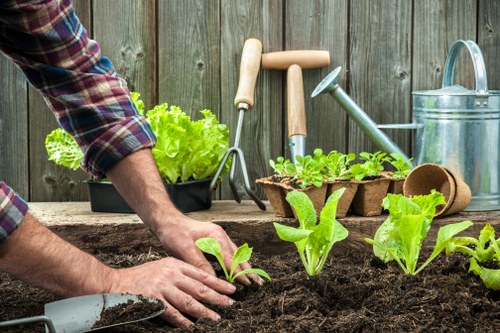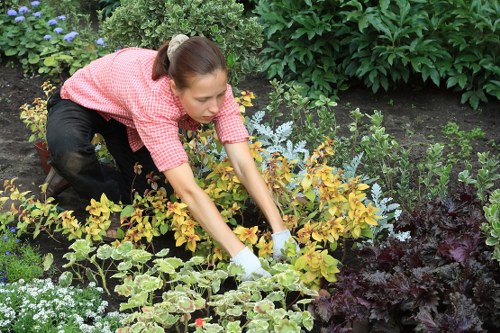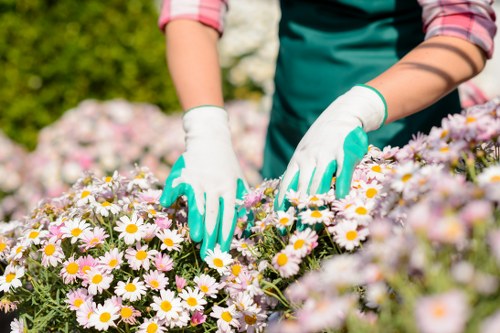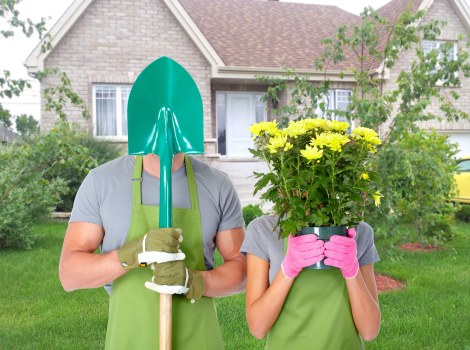Comprehensive Garden Maintenance in Chelsea

Introduction to Garden Maintenance
Maintaining a beautiful garden in Chelsea requires dedication, knowledge, and the right resources. Whether you're a seasoned gardener or a novice, understanding the essential aspects of garden upkeep ensures your outdoor space remains vibrant and healthy throughout the year.
Effective garden maintenance not only enhances the aesthetic appeal of your property but also contributes to a sustainable environment. In Chelsea, where urban living meets green spaces, proper maintenance practices are crucial for thriving gardens.
In this guide, we will explore various strategies and tips for maintaining your garden in Chelsea, covering everything from soil health to seasonal care.

Understanding Chelsea’s Climate
Chelsea experiences a temperate maritime climate, characterized by mild winters and cool summers. This climate influences the type of plants that thrive and the maintenance practices required.
Why Climate Matters: Different plants have varying tolerances to temperature, humidity, and precipitation. Knowing Chelsea's climate helps in selecting suitable plant species and planning maintenance activities accordingly.
For instance, perennials that withstand cool temperatures are ideal, while annuals can add vibrant colors during the warmer months.

Soil Health and Preparation
Healthy soil is the foundation of a thriving garden. In Chelsea, the soil tends to be [describe typical soil conditions, e.g., clayey, loamy, etc.], which affects drainage and nutrient availability.
Soil Testing: Conducting a soil test helps determine pH levels and nutrient deficiencies. Based on the results, you can amend the soil with organic matter, compost, or specific fertilizers to create an optimal growing environment.
Regularly aerating the soil improves its structure, allowing roots to penetrate deeply and absorb nutrients effectively.

Plant Selection and Care
Choosing the Right Plants
Selecting plants that are well-suited to Chelsea's climate ensures easier maintenance and better growth. Native plants are a great choice as they are adapted to the local environment and require less water and care.
Popular Plant Varieties in Chelsea
- Roses
- Lavender
- Hostas
- Hydrangeas
Plant Maintenance Tips
Regular pruning, staking, and deadheading are essential for maintaining plant health and encouraging blooms.
Watering: Ensure consistent watering, especially during dry spells. Using mulch can help retain moisture and reduce weed growth.
Fertilizing plants monthly during the growing season provides the necessary nutrients for vigorous growth.

Seasonal Garden Maintenance
Spring Care
Spring is the perfect time to prepare your garden for the growing season. Start by clearing out any debris left from the winter and inspecting plants for damage.
Tasks to Perform in Spring:
- Prune back dead branches.
- Apply fresh mulch.
- Plant new annuals and perennials.
- Set up irrigation systems.
Summer Maintenance
During the summer, focus on watering, weeding, and pest control to keep your garden healthy and vibrant.
Regularly check for signs of disease or pest infestation and take immediate action to prevent spread.
Provide adequate shade and ventilation for plants that are sensitive to high temperatures.

Winter Garden Care
Protecting Plants
As winter approaches, take steps to protect your garden from frost and harsh weather conditions.
Winterizing Your Garden:
- Cover delicate plants with frost cloths.
- Trim back perennials after they have died back.
- Store gardening tools in a dry place.
- Plan for spring planting.
Maintaining Soil Health in Winter
Even during the colder months, maintaining soil health is crucial. Add compost to enrich the soil and improve its structure for the next growing season.
Prevent soil erosion by planting cover crops or adding protective layers like straw or leaves.
Regularly monitor soil moisture to prevent waterlogging, which can damage plant roots.

Tools and Equipment for Garden Maintenance
Essential Tools
Having the right tools makes garden maintenance more efficient and less labor-intensive.
Must-Have Garden Tools:
- Pruning Shears
- Garden Fork
- Hand Trowel
- Watering Hose with Nozzle
- Wheelbarrow
Advanced Equipment
For larger gardens, investing in power tools like lawnmowers, tillers, and irrigation systems can save time and effort.
Regular maintenance of tools ensures their longevity and performance. Clean and sharpen blades after each use.
Store tools in a dry, organized space to prevent rust and damage.

Pest and Disease Management
Identifying Common Pests
Pests can wreak havoc on your garden if not managed properly. Common pests in Chelsea gardens include aphids, slugs, and caterpillars.
Natural Pest Control Methods:
- Introduce beneficial insects like ladybugs and lacewings.
- Use neem oil or insecticidal soap.
- Handpick larger pests during early morning or late evening.
- Implement crop rotation to disrupt pest life cycles.
Preventing Plant Diseases
Fungal diseases such as powdery mildew and root rot are common challenges. Proper spacing, watering at the base of plants, and promoting good air circulation help prevent these issues.
Regular Inspection: Frequently inspect plants for early signs of disease to take timely action.
Remove and dispose of infected plants to prevent the spread to healthy ones.

Landscape Design and Aesthetics
Creating a Cohesive Design
A well-designed garden not only looks appealing but also functions efficiently. Consider the layout, color schemes, and plant heights to achieve a balanced look.
Design Elements to Consider:
- Pathways and walkways
- Water features like fountains or ponds
- Seating areas for relaxation
- Lighting for nighttime beauty
Incorporating Seasonal Plants
Planting a mix of annuals and perennials ensures your garden remains colorful throughout the year. Incorporate spring bulbs, summer blooms, autumn foliage, and winter evergreens for continuous interest.
Use companion planting to enhance plant growth and deter pests naturally.
Regularly update and rearrange plant placements to keep the garden dynamic and engaging.

Sustainable Gardening Practices
Water Conservation
Conserving water is essential, especially during dry spells. Implementing rainwater harvesting systems and using drip irrigation can significantly reduce water usage.
Mulching Techniques:
- Apply organic mulches like bark or straw to retain soil moisture.
- Use inorganic mulches such as gravel for specific plant types.
- Maintain a mulch layer of 2-3 inches for optimal benefits.
Composting
Composting kitchen scraps and garden waste recycles nutrients back into the soil, enhancing its fertility naturally.
Set up a compost bin in a shaded area of your garden and turn it regularly to speed up decomposition.
Use the resulting compost as a rich amendment for your plants, promoting healthy growth.

Professional Garden Maintenance Services in Chelsea
Why Hire Professionals?
While DIY garden maintenance is feasible, hiring professional gardeners in Chelsea offers expertise, efficiency, and a polished result.
Benefits of Professional Services:
- Customized maintenance plans tailored to your garden's needs.
- Access to specialized tools and equipment.
- Expert advice on plant selection and care.
- Consistent and reliable service schedules.
Choosing the Right Service Provider
When selecting a garden maintenance service in Chelsea, consider their experience, portfolio, and client reviews. Ensure they understand your vision and can deliver the desired outcomes.
Request a consultation to discuss your garden's specific requirements and receive a customized maintenance plan.
Transparent pricing and clear communication are key factors in a successful partnership with garden maintenance professionals.

DIY Garden Maintenance Tips
Regular Inspection and Care
Dedicate time each week to inspect your garden. Look for signs of pests, diseases, or nutrient deficiencies and address them promptly.
Simple Maintenance Tasks:
- Watering plants appropriately.
- Removing weeds regularly.
- Pruning and trimming shrubs and trees.
- Fertilizing plants as needed.
Creating a Maintenance Schedule
Establish a routine schedule to manage various garden tasks efficiently. Divide tasks into daily, weekly, and monthly activities to ensure nothing is overlooked.
Use garden planning apps or calendars to track maintenance activities and stay organized.
Adjust the schedule based on seasonal changes and the specific needs of your plants.

Enhancing Garden Biodiversity
The Importance of Biodiversity
A diverse garden supports a wide range of flora and fauna, promoting a balanced ecosystem. Biodiversity enhances resilience against pests and diseases and improves soil health.
Ways to Increase Biodiversity:
- Plant a variety of species and cultivars.
- Include native plants and flowers.
- Provide habitats for wildlife, such as birdhouses and insect hotels.
- Avoid using chemical pesticides and fertilizers.
Benefits of a Biodiverse Garden
A biodiverse garden attracts pollinators like bees and butterflies, which are essential for plant reproduction.
It also supports beneficial insects that control pest populations naturally, reducing the need for chemical interventions.
Furthermore, a diverse garden offers aesthetic value and creates a more engaging and dynamic outdoor space.

Conclusion
Maintaining a garden in Chelsea is a rewarding endeavor that combines art, science, and dedication. By understanding the local climate, ensuring soil health, selecting appropriate plants, and implementing regular maintenance practices, you can cultivate a stunning and sustainable garden.
Whether you choose to maintain your garden yourself or enlist the help of professionals, the key is consistency and attention to detail.
Start implementing these garden maintenance strategies today to enjoy a flourishing green space in the heart of Chelsea.
Contact us today to learn more about our garden maintenance services and how we can help transform your outdoor space.

